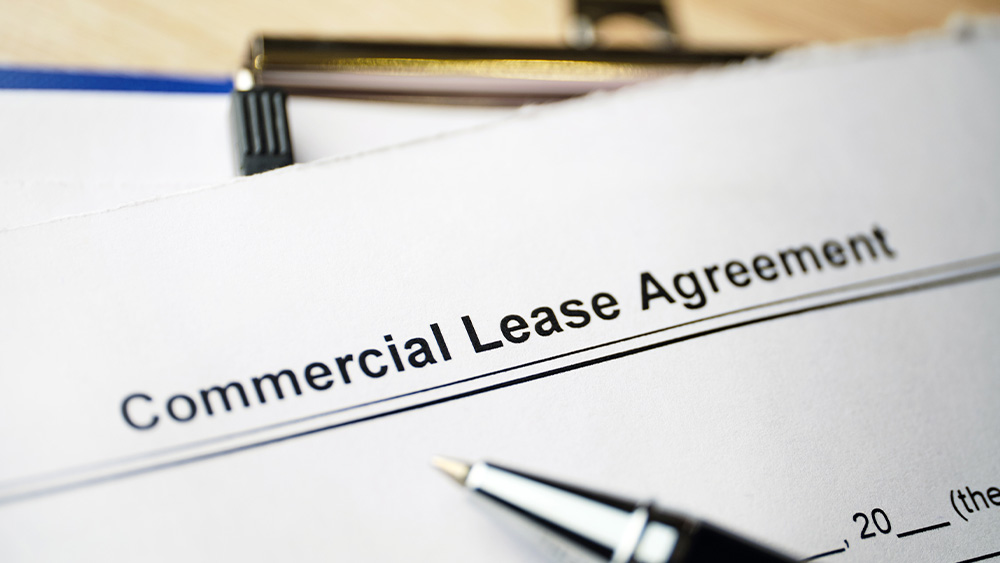Tenant Resources
How to Avoid Common Mistakes Made When Signing a Commercial Lease

For any first-time small business owner, signing a commercial lease is a crucial decision that deserves a considerable amount of careful thought, in-depth research, and advice from someone — such as a lawyer — that understands the ins and outs of commercial leases.
At Kenwood, we want to see all Tenants sign an agreement that is mutually beneficial to everyone. That’s why we’ve compiled some helpful suggestions to avoid common mistakes when signing a commercial lease.
To keep you and your business out of leasing pitfalls, heed the following advice before signing a lease for a commercial property.
Get To Know Your Landlord
There’s not much worse than having an inflexible Landlord that’s hard to get along with or who makes leasing their commercial property a miserable experience. That’s why it’s important to at least have some dialogue and communication with your potential Landlord prior to signing a lease with them. At Kenwood, we encourage effective and ongoing communication. One hundred percent of our Tenants have our Principal's cell phone numbers.
Another piece of advice would be to get a feel for their personality, demeanor, and professionalism before embarking on a serious business transaction with them that can significantly impact the success of your business one way or another.
If you get bad vibes from a Landlord when you initially meet them or feel as though they come across as unorganized or unprofessional, you might want to spend some more time looking at other available commercial properties. Once you find a Landlord that you like and trust, it can lead to a long-lasting and mutually beneficial business relationship for both parties.
Understand All Costs and Services
- Base rent increase: Typically, rental rates increase annually, around 3-4 percent. Make sure to understand when these increases go into effect, to avoid any surprises.
- Common area renovation/repairs: If the building has a common area, it’s important to carefully review the Common Area Maintenance (CAM) portion of your lease before signing. Services related to these areas, such as janitorial, landscaping, extermination, parking lot lighting, etc. need to be performed. In office buildings, typically Landlords perform these services; however, a Tenant may contribute towards their costs (see below). This concept separates who is responsible for the work versus who pays for the work.
- Common Area Maintenance charges: As noted above, Landlords may be responsible for performing certain services, but Tenants may be responsible to reimburse them for all or a portion of these services. Typically, Tenants may pay a monthly estimate towards these expenses. These are often referred to as “prepayments”.
- Common Area Maintenance reconciliations: Annually, a Landlord will perform a reconciliation of the prepayments made by the Tenant versus the actual expense incurred, and then issue a reconciliation. Tenants would have a balance due if the actual costs were greater than the prepayments or would receive a credit if the actual payments were less.
- Insurance: Several types of insurance could be required to sign a commercial lease. Typically, Landlords cover insurance for the property and things contained outside the perimeter walls of your suite. Tenants typically cover everything within their suite, including personal property, contents, etc...
Understand The Tenant Improvement Budget
The tenant improvement process can be an area of great confusion. Commercial construction standards, codes, order of construction, timing, permits, inspections can all be part of that process to complete the project but can completely outside the realm of a Tenant’s expertise.
Understanding the permits process and county/city approvals and inspections can have a dramatic impact on the overall construction schedule and the budget. In order to submit for a permit, often an architect and engineer will need to be engaged to prepare plans for the county/city to review. Preparing these plans can often take between 2-4 weeks and cost between a few thousand dollars to tens of thousands of dollars. Once completed, then the plans are submitted for permit. Depending on the jurisdiction, the review process can be as short as one day, or as long as 8 weeks. This can be very frustrating because of the extensive time involved.
Lastly, once the plans are approved and construction commences, now the jurisdiction will conduct various inspections. This helps ensure that the project is being built according to the plans and that building codes are being followed. This also helps to ensure that a required level of safety is being followed by the contractor, which benefits everyone.
At Kenwood, we are always happy to discuss commercial building leases with prospective tenants. For more information and to view our tenant testimonials, visit our website: www.kenwoodmgt.com.
If you think you’re ready to put the above advice into action and want to inquire about some commercial properties, view our portfolio of commercial real estate at the link below.

